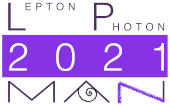Speaker
Description
The COMET Phase-I experiment aims to search for charged lepton flavour violation in the coherent neutrino-less conversion of a muon to an electron with a 100 times better sensitivity than the current best limit. Muons required for the search are generated from the in-flight decay of low momentum pions produced inside a target by impinging a powerful proton beam extracted from the J-PARC Main Ring accelerator. As a result of the intense beam, our detector system must necessarily be situated in a high radiation high hit rate environment with neutron flux up to 1012 MeV-equivalent neutrons per cm2 and gamma dose up to 1 kGy. Standard photo-detectors cannot survive in such a harsh environment. So our design for a Cylindrical Trigger Hodoscope (CTH) consists of radially aligned plastic scintillator bars at the both ends of the tracking detector, with about 10m long optical fibre bundles that transmit the scintillation photon light. This enables us to use cost-effective silicon-photomultipliers (SiPM) remotely at the location where the radiation level is expected to be lower by an order. We demonstrated that our timing requirement of 1 ns is achievable with an optical fibre and SiPM readout scheme by using a small prototype, and further studies for photo-transmission efficiency and SiPM cooling are ongoing. In this presentation, results from several test measurements of the CTH will be presented, together with future prospects.
